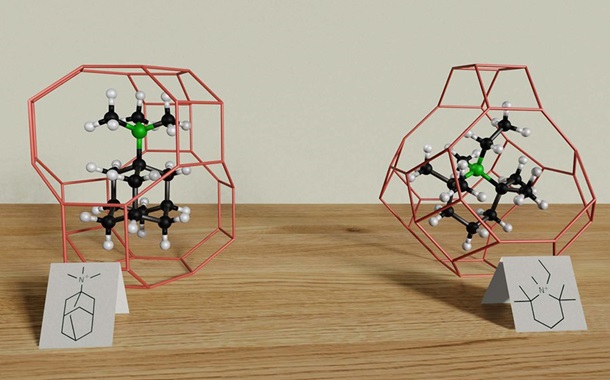Adoption of Blockchain Technology in Healthcare Supply Chain Management: A Review
Downloads
Doi:10.28991/HIJ-2024-05-04-019
Full Text:PDF
Downloads
Jarrett, S., Wilmansyah, T., Bramanti, Y., Alitamsar, H., Alamsyah, D., Krishnamurthy, K. R., Yang, L., & Pagliusi, S. (2020). The role of manufacturers in the implementation of global traceability standards in the supply chain to combat vaccine counterfeiting and enhance safety monitoring. Vaccine, 38(52), 8318–8325. doi:10.1016/j.vaccine.2020.11.011.
Cui, L., Xiao, Z., Chen, F., Dai, H., & Li, J. (2023). Protecting Vaccine Safety: An Improved, Blockchain-Based, Storage-Efficient Scheme. IEEE Transactions on Cybernetics, 53(6), 3588–3598. doi:10.1109/TCYB.2022.3163743.
Rosa, B. M. G., Anastasova, S., & Yang, G. Z. (2023). NFC-Powered Implantable Device for On-Body Parameters Monitoring With Secure Data Exchange Link to a Medical Blockchain Type of Network. IEEE Transactions on Cybernetics, 53(1), 31–43. doi:10.1109/TCYB.2021.3088711.
Zheng, W., Wang, K., & Wang, F. Y. (2021). GAN-Based Key Secret-Sharing Scheme in Blockchain. IEEE Transactions on Cybernetics, 51(1), 393–404. doi:10.1109/TCYB.2019.2963138.
Tang, C., Li, C., Yu, X., Zheng, Z., & Chen, Z. (2020). Cooperative Mining in Blockchain Networks with Zero-Determinant Strategies. IEEE Transactions on Cybernetics, 50(10), 4544–4549. doi:10.1109/TCYB.2019.2915253.
Omar, I. A., Debe, M., Jayaraman, R., Salah, K., Omar, M., & Arshad, J. (2022). Blockchain-based Supply Chain Traceability for COVID-19 personal protective equipment. Computers and Industrial Engineering, 167. doi:10.1016/j.cie.2022.107995.
Park, C. Y., Kim, K., Roth, S., Beck, S., Kang, J. W., & Tayag, M. C. (2020). Global shortage of personal protective equipment amid COVID-19: supply chains, bottlenecks, and policy implications. Future of Regional Cooperation in Asia and the Pacific, 442.
Omar, I. A., Jayaraman, R., Salah, K., Simsekler, M. C. E., Yaqoob, I., & Ellahham, S. (2020). Ensuring protocol compliance and data transparency in clinical trials using Blockchain smart contracts. BMC Medical Research Methodology, 20(1), 224. doi:10.1186/s12874-020-01109-5.
Nugent, T., Upton, D., & Cimpoesu, M. (2016). Improving data transparency in clinical trials using blockchain smart contracts. F1000Research, 5. doi:10.12688/f1000research.9756.1.
Trong, P. N., Vo, H. K., Huong, L. H., Gia, K. H., Dang, K. T., Van, H. Le, Huu, N. H., Huyen, T. N., Nguyen, T. A., Phu, L. V. C., Quoc, D. N. T., Khanh, B. Le, & Tuan, K. Le. (2022). Blood and Product-Chain: Blood and its Products Supply Chain Management based on Blockchain Approach. International Journal of Advanced Computer Science and Applications, 13(11), 743–750. doi:10.14569/IJACSA.2022.0131186.
Humayun, M., Jhanjhi, N. Z., Niazi, M., Amsaad, F., & Masood, I. (2022). Securing Drug Distribution Systems from Tampering Using Blockchain. Electronics (Switzerland), 11(8), 1195. doi:10.3390/electronics11081195.
Alkhader, W., Salah, K., Sleptchenko, A., Jayaraman, R., Yaqoob, I., & Omar, M. (2021). Blockchain-Based Decentralized Digital Manufacturing and Supply for COVID-19 Medical Devices and Supplies. IEEE Access, 9, 137923–137940. doi:10.1109/ACCESS.2021.3118085.
Mani, V., Prakash, M., & Lai, W. C. (2022). Cloud-based blockchain technology to identify counterfeits. Journal of Cloud Computing, 11(1), 67. doi:10.1186/s13677-022-00341-2.
Uddin, M., Salah, K., Jayaraman, R., Pesic, S., & Ellahham, S. (2021). Blockchain for drug traceability: Architectures and open challenges. Health Informatics Journal, 27(2), 1–15. doi:10.1177/14604582211011228.
Waltonchain. (2024). Waltonchain Online. Available online: https://www.waltonchain.org/#/en. (accessed November 2024).
Falco, G., Li, C., Fedorov, P., Caldera, C., Arora, R., & Jackson, K. (2019). NeuroMesh: IoT security enabled by a blockchain powered botnet vaccine. ACM International Conference Proceeding Series, Part F148162, 1–6. doi:10.1145/3312614.3312615.
Peng, S., Hu, X., Zhang, J., Xie, X., Long, C., Tian, Z., & Jiang, H. (2020). An Efficient Double-Layer Blockchain Method for Vaccine Production Supervision. IEEE Transactions on Nanobioscience, 19(3), 579–587. doi:10.1109/TNB.2020.2999637.
Yong, B., Shen, J., Liu, X., Li, F., Chen, H., & Zhou, Q. (2020). An intelligent blockchain-based system for safe vaccine supply and supervision. International Journal of Information Management, 52. doi:10.1016/j.ijinfomgt.2019.10.009.
Cui, L., Xiao, Z., Wang, J., Chen, F., Pan, Y., Dai, H., & Qin, J. (2021). Improving Vaccine Safety Using Blockchain. ACM Transactions on Internet Technology, 21(2), 1–24. doi:10.1145/3388446.
Xiao, Z. (2024). Source Code for Performance Evaluation. Github, California, United States. Available online: https://github.com/xiaozhe-szu/BBVSPS. (accessed November 2024).
Dwyer, J. T., Coates, P. M., & Smith, M. J. (2018). Dietary supplements: Regulatory challenges and research resources. Nutrients, 10(1), 41. doi:10.3390/nu10010041.
Kumar, R., & Tripathi, R. (2019). Traceability of counterfeit medicine supply chain through Blockchain. 2019 11th International Conference on Communication Systems and Networks, COMSNETS 2019, 568–570. doi:10.1109/COMSNETS.2019.8711418.
Hasan, H., AlHadhrami, E., AlDhaheri, A., Salah, K., & Jayaraman, R. (2019). Smart contract-based approach for efficient shipment management. Computers and Industrial Engineering, 136, 149–159. doi:10.1016/j.cie.2019.07.022.
Huang, Y., Wu, J., & Long, C. (2018). Drugledger: A practical blockchain system for drug traceability and regulation. Proceedings - 2018 International Congress on Cybermatics: 2018 IEEE Conferences on Internet of Things, Green Computing and Communications, Cyber, Physical and Social Computing, Smart Data, Blockchain, Computer and Information Technology, IThings/GreenCom/CPSCom/SmartData/Blockchain/CIT 2018, 1137–1144. doi:10.1109/Cybermatics_2018.2018.00206.
Haq, I., & Muselemu, O. (2018). Blockchain Technology in Pharmaceutical Industry to Prevent Counterfeit Drugs. International Journal of Computer Applications, 180(25), 8–12. doi:10.5120/ijca2018916579.
M R, L., Ahmed M N, S., & Khan, S. (2021). Block Chain Based Supply Chain Management for Counterfeit Drugs in Pharmaceutical Industry. International Journal of Scientific Research in Computer Science, Engineering and Information Technology, 7(1), 100–108. doi:10.32628/cseit217122.
Uddin, M. (2021). Blockchain Medledger: Hyperledger fabric enabled drug traceability system for counterfeit drugs in pharmaceutical industry. International Journal of Pharmaceutics, 597. doi:10.1016/j.ijpharm.2021.120235.
Li, P., Nelson, S. D., Malin, B. A., & Chen, Y. (2019). DMMS: A Decentralized Blockchain Ledger for the Management of Medication Histories. Blockchain in Healthcare Today, 2, 1–15. doi:10.30953/bhty.v2.38.
Jamil, F., Hang, L., Kim, K. H., & Kim, D. H. (2019). A novel medical blockchain model for drug supply chain integrity management in a smart hospital. Electronics (Switzerland), 8(5), 505. doi:10.3390/electronics8050505.
Humayun, M. (2020). Role of emerging IoT big data and cloud computing for real time application. International Journal of Advanced Computer Science and Applications, 11(4), 494–506. doi:10.14569/IJACSA.2020.0110466.
Fernando, E., Meyliana, M., Warnars, H. L. H. S., Abdurachman, E., & Surjandy, S. (2021). Blockchain Technology-Based Good Distribution Practice Model of Pharmacy Industry in Indonesia. Advances in Science, Technology and Engineering Systems Journal, 6(2), 267–273. doi:10.25046/aj060230.
Siyal, A. A., Junejo, A. Z., Zawish, M., Ahmed, K., Khalil, A., & Soursou, G. (2019). Applications of blockchain technology in medicine and healthcare: Challenges and future perspectives. Cryptography, 3(1), 1–16. doi:10.3390/cryptography3010003.
Rana, S. (2020). Rise of Counterfeit PPE in India amid COVID-19. ICLG.Com. Available online: https://iclg.com/briefing/13315-rise-of-counterfeit-ppe-in-india-amid-covid-19 (accessed on November 2024).
Lagasse, J. (2020). Healthcare industry is grappling with the emergence of counterfeit PPE in the COVID-19 battle. Healthcare Finance. Available online: https://www.healthcarefinancenews.com/news/healthcare-industry-grappling-emergence-counterfeit-ppe-covid-19-battle (accessed on November 2024).
Gomasta, S. S., Dhali, A., Tahlil, T., Anwar, M. M., & Ali, A. B. M. S. (2023). PharmaChain: Blockchain-based drug supply chain provenance verification system. Heliyon, 9(7), e17957. doi:10.1016/j.heliyon.2023.e17957.
Helo, P., & Hao, Y. (2019). Blockchains in operations and supply chains: A model and reference implementation. Computers and Industrial Engineering, 136, 242–251. doi:10.1016/j.cie.2019.07.023.
Zutshi, A., Grilo, A., & Nodehi, T. (2021). The value proposition of blockchain technologies and its impact on Digital Platforms. Computers and Industrial Engineering, 155. doi:10.1016/j.cie.2021.107187.
Benet, J. (2014). Ipfs-content addressed, versioned, P2P file system. arXiv preprint arXiv:1407.3561.
Agrawal, T. K., Kumar, V., Pal, R., Wang, L., & Chen, Y. (2021). Blockchain-based framework for supply chain traceability: A case example of textile and clothing industry. Computers and Industrial Engineering, 154. doi:10.1016/j.cie.2021.107130.
Parizi, R. M., Amritraj, & Dehghantanha, A. (2018). Smart contract programming languages on blockchains: An empirical evaluation of usability and security. Lecture Notes in Computer Science (Including Subseries Lecture Notes in Artificial Intelligence and Lecture Notes in Bioinformatics), 10974 LNCS, 75–91. doi:10.1007/978-3-319-94478-4_6.
Hasan, H. R., Salah, K., Jayaraman, R., Arshad, J., Yaqoob, I., Omar, M., & Ellahham, S. (2020). Blockchain-Based Solution for COVID-19 Digital Medical Passports and Immunity Certificates. IEEE Access, 8, 222093–222108. doi:10.1109/ACCESS.2020.3043350.
Yaqoob, I., Salah, K., Jayaraman, R., & Al-Hammadi, Y. (2022). Blockchain for healthcare data management: opportunities, challenges, and future recommendations. Neural Computing and Applications, 34(14), 11475–11490. doi:10.1007/s00521-020-05519-w.
Wierzbicki, J., Nowacki, M., Chrzanowska, M., Matkowski, R., Zič™tek, M., Nowacka, K., Maciejczyk, A., & Pawlak-Adamska, E. (2020). Additive manufacturing technologies enabling rapid and interventional production of protective face shields and masks during the COVID-19 pandemic. Advances in Clinical and Experimental Medicine, 29(9), 1021–1028. doi:10.17219/ACEM/126296.
Akunyili, D. (2007). Fake and counterfeit drugs in the health sector: The role of medical doctors. Annals of Ibadan Postgraduate Medicine, 2(2), 19–23. doi:10.4314/aipm.v2i2.39094.
HRF. (2014). 20 Shocking Counterfeit Drugs Statistics. Health Research Funding. Available online: http://healthresearchfunding.org/20-shocking-counterfeit-drugs-statistics/ (accessed on November 2024).
Swan, M. (2015). Blockchain: Blueprint for a new economy. Climate Change 2013 - The Physical Science Basis. Sebastopol, United States.
Mani, V., Manickam, P., Alotaibi, Y., Alghamdi, S., & Khalaf, O. I. (2021). Hyperledger healthchain: Patient-centric IPFS-based storage of health records. Electronics (Switzerland), 10(23), 3003. doi:10.3390/electronics10233003.
Vinodhini, M., & Prakash, M. (2021). A patient-centric doctor referral model based on hyperledger chaincode. CSITSS 2021 - 2021 5th International Conference on Computational Systems and Information Technology for Sustainable Solutions, Proceedings, 1–5. doi:10.1109/CSITSS54238.2021.9683481.
Mani, V., Kavitha, C., Band, S. S., Mosavi, A., Hollins, P., & Palanisamy, S. (2022). A Recommendation System Based on AI for Storing Block Data in the Electronic Health Repository. Frontiers in Public Health, 9, 831404. doi:10.3389/fpubh.2021.831404.
Hyperledger (2020). "Hyperledger/Fabric," Github, California, United States. Available online: github.com/hyperledger/fabric. (accessed on May 2024).
. S. A. A. (2016). Blockchain Ready Manufacturing Supply Chain Using Distributed Ledger. International Journal of Research in Engineering and Technology, 05(09), 1–10. doi:10.15623/ijret.2016.0509001.
Alonso-Rorís, V. M., ílvarez-Sabucedo, L., Santos-Gago, J. M., & Ramos"Merino, M. (2016). Towards a cost-effective and reusable traceability system. A semantic approach. Computers in Industry, 83, 1–11. doi:10.1016/j.compind.2016.08.003.
Barua, M., Liang, X., Lu, R., & Shen, X. (2011). ESPAC: Enabling security and patient-centric access control for e-health in cloud computing. International Journal of Security and Networks, 6(2–3), 67–76. doi:10.1504/IJSN.2011.043666.
Kim, S., & Kim, D. (2018). Design of an innovative blood cold chain management system using blockchain technologies. ICIC Express Letters, Part B: Applications, 9(10), 1067–1073. doi:10.24507/icicelb.09.10.1067.
Lakshminarayanan, S., Kumar, P. N., & Dhanya, N. M. (2020). Implementation of Blockchain-Based Blood Donation Framework. IFIP Advances in Information and Communication Technology, 578, 276–290. doi:10.1007/978-3-030-63467-4_22.
Le, H. T., Nguyen, T. T. L., Nguyen, T. A., Ha, X. S., & Duong-Trung, N. (2022). BloodChain: A Blood Donation Network Managed by Blockchain Technologies. Network, 2(1), 21–35. doi:10.3390/network2010002.
Son, H. X., & Hoang, N. M. (2019). A novel attribute-based access control system for fine-grained privacy protection. ACM International Conference Proceeding Series, 76–80. doi:10.1145/3309074.3309091.
Du, M., Chen, Q., Xiao, J., Yang, H., & Ma, X. (2020). Supply Chain Finance Innovation Using Blockchain. IEEE Transactions on Engineering Management, 67(4), 1045–1058. doi:10.1109/TEM.2020.2971858.
Clark, F. (2015). Rise in online pharmacies sees counterfeit drugs go global. The Lancet, 386(10001), 1327–1328. doi:10.1016/S0140-6736(15)00394-3.
PSI. (2024). Pharmaceutical Security Institute Website, "Incident trends," 2002. Available online: www.psi-inc.org/incident-trends (accessed on November 2024).
Parker, R., & Sommer, M. (2010). Routledge handbook of global public health. In Routledge Handbook of Global Public Health. Routledge, New York, United States. doi:10.4324/9780203832721.
Plotnikov, V., & Kuznetsova, V. (2018). The Prospects for the Use of Digital Technology "blockchain” in the Pharmaceutical Market. MATEC Web of Conferences, 193, 2029. doi:10.1051/matecconf/201819302029.
Gorenflo, C., Lee, S., Golab, L., & Keshav, S. (2020). FastFabric: Scaling hyperledger fabric to 20 000 transactions per second. International Journal of Network Management, 30(5), 455–463. doi:10.1002/nem.2099.
Besu. (2019). Hyperledger Besu Enterprise Ethereum Client. Hyperledger Besu Community, Besu. Available online: https://besu.hyperledger.org/en/stable/ (accessed on November 2024).
Benatia, M. A., Remadna, A., Baudry, D., Halftermeyer, P., & Delalin, H. (2018). Qr-code enabled product traceability system: A big data perspective. Advances in Transdisciplinary Engineering, 8. doi:10.3233/978-1-61499-902-7-323.
Clark, B., & Burstall, R. (2018). Blockchain, IP and the pharma industry-how distributed ledger technologies can help secure the pharma supply chain. Journal of Intellectual Property Law and Practice, 13(7), 531–533. doi:10.1093/jiplp/jpy069.
Das, A. K., Bera, B., & Giri, D. (2021). AI and Blockchain-Based Cloud-Assisted Secure Vaccine Distribution and Tracking in IoMT-Enabled COVID-19 Environment. IEEE Internet of Things Magazine, 4(2), 26–32. doi:10.1109/iotm.0001.2100016.
Mcafee. (2024). Blockchain Threat Report-Mcafee.com. Available online: www.mcafee.com/enterprise/en-us/assets/reports/rp-blockchain-security-risks.pdf. (accessed on May 2024).
Yepes-Nuñez, J. J., Urrútia, G., Romero-García, M., & Alonso-Fernández, S. (2021). The PRISMA 2020 statement: an updated guideline for reporting systematic reviews. Revista Espanola de Cardiologia, 74(9), 790–799. doi:10.1016/j.recesp.2021.06.016.
Page, M. J., McKenzie, J. E., Bossuyt, P. M., Boutron, I., Hoffmann, T. C., Mulrow, C. D., Shamseer, L., Tetzlaff, J. M., Akl, E. A., Brennan, S. E., Chou, R., Glanville, J., Grimshaw, J. M., Hróbjartsson, A., Lalu, M. M., Li, T., Loder, E. W., Mayo-Wilson, E., McDonald, S., ... Moher, D. (2022). The PRISMA 2020 statement: an updated guideline for reporting systematic reviews. Revista Panamericana de Salud Publica/Pan American Journal of Public Health, 46. doi:10.26633/RPSP.2022.112.
Kitchenham, B., & Brereton, P. (2013). A systematic review of systematic review process research in software engineering. Information and Software Technology, 55(12), 2049–2075. doi:10.1016/j.infsof.2013.07.010.
Kitchenham, B., & Charters, S. M. (2007). Guidelines for performing systematic literature reviews in software engineering. Technical Report, Ver. 2.3 EBSE Technical Report. EBSE, January 2007, 1–57.
Colomo-Palacios, R., Sánchez-Gordón, M., & Arias-Aranda, D. (2020). A critical review on blockchain assessment initiatives: A technology evolution viewpoint. Journal of Software: Evolution and Process, 32(11). doi:10.1002/smr.2272.
Higgins, J. P. T., Thomas, J., Chandler, J., Cumpston, M., Li, T., Page, M. J., & Welch, V. A. (2019). Cochrane handbook for systematic reviews of interventions. Cochrane Handbook for Systematic Reviews of Interventions. West Sussex, England. doi:10.1002/9781119536604.
Fiore, M., Capodici, A., Rucci, P., Bianconi, A., Longo, G., Ricci, M., Sanmarchi, F., & Golinelli, D. (2023). Blockchain for the Healthcare Supply Chain: A Systematic Literature Review. Applied Sciences (Switzerland), 13(2), 686. doi:10.3390/app13020686.
Tas, R., & Tanriover, O. O. (2019). Building a Decentralized Application on the Ethereum Blockchain. 3rd International Symposium on Multidisciplinary Studies and Innovative Technologies, 1–4. doi:10.1109/ISMSIT.2019.8932806.
Christidis, K., & Devetsikiotis, M. (2016). Blockchains and Smart Contracts for the Internet of Things. IEEE Access, 4, 2292–2303. doi:10.1109/ACCESS.2016.2566339.
Boetto, E., Golinelli, D., Carullo, G., & Fantini, M. P. (2021). Frauds in scientific research and how to possibly overcome them. Journal of Medical Ethics, 47(12), E19. doi:10.1136/medethics-2020-106639.
The Guardian (2017). 10% of drugs in poor countries are fake, says WHO | Global health. The Guardian, London, United Kingdom. Available online: https://www.theguardian.com/global-development/2017/nov/28/10-of-drugs-in-poor-countries-are-fake-says-who (accessed on November 2024).
W.H.O. (2017). A study on Public Health and Socio-economic Impact of Substandard and Falsified Medical Products. World Health Organization, 1–67. Available online: https://www.who.int/publications/i/item/9789241513432 (accessed on November 2024).
Theodoratou, E., Al-Jilaihawi, S., Woodward, F., Ferguson, J., Jhass, A., Balliet, M., Kolcic, I., Sadruddin, S., Duke, T., Rudan, I., & Campbell, H. (2010). The effect of case management on childhood pneumonia mortality in developing countries. International Journal of Epidemiology, 39(SUPPL. 1), 155– 171. doi:10.1093/ije/dyq032.
Ahmad, R. W., Salah, K., Jayaraman, R., Yaqoob, I., Ellahham, S., & Omar, M. (2023). Blockchain and COVID-19 pandemic: applications and challenges. Cluster Computing, 26(4), 2383–2408. doi:10.1007/s10586-023-04009-7.
Nanda, S. K., Panda, S. K., & Dash, M. (2023). Medical supply chain integrated with blockchain and IoT to track the logistics of medical products. Multimedia Tools and Applications, 82(21), 32917–32939. doi:10.1007/s11042-023-14846-8.
Sahu, S., Hemlata, & Verma, A. (2014). Adverse events related to blood transfusion. Indian Journal of Anaesthesia, 58(5), 543–551. doi:10.4103/0019-5049.144650.
Yadav, A. K., Shweta, & Kumar, D. (2023). Blockchain technology and vaccine supply chain: Exploration and analysis of the adoption barriers in the Indian context. International Journal of Production Economics, 255. doi:10.1016/j.ijpe.2022.108716.
Alanzi, H., & Alkhatib, M. (2022). Towards Improving Privacy and Security of Identity Management Systems Using Blockchain Technology: A Systematic Review. Applied Sciences (Switzerland), 12(23), 12415. doi:10.3390/app122312415.
Ahamed N, N., & Vignesh, R. (2022). Blood Supply Chain Management Using Blockchain Technology. Research Square (Preprint), 1-16. doi:10.21203/rs.3.rs-1888116/v1.
Kim, S., Kim, J., & Kim, D. (2020). Implementation of a blood cold chain system using blockchain technology. Applied Sciences (Switzerland), 10(9), 3330. doi:10.3390/app10093330.
- This work (including HTML and PDF Files) is licensed under a Creative Commons Attribution 4.0 International License.





















